There are homes that we inhabit, homes that we yearn for, and homes that we craft in moments of peace and belonging. Yet, for an artist, there is a singular, tangible homeland: that of stories.
In the creative process, artists live through stories, drawing from memories of the past, present, and future. Even as ancient landscapes and traditions fade, storytelling can revive them. The self is not a fixed entity, but a vessel through which greater expressions, such as emotions or spiritual states, flow.
For Moroccan artist Mohammed El Hajoui, this vessel is an umbilical cord connecting him to the memories of his roots and origins. For him, art is not merely a static portrait on a wall; it is a journey that transports us into his own realm of stories, where time ceases to exist and past and present intertwine.
Through his 3D installations, which blur the boundaries between art and space, he brings to life the lost poetry and beauty of Arab indigenous ways of life.
With a BA degree in graphic design and art direction from the esteemed NABA in Milan, El Hajoui has used art as a love letter to his culture. He highlights the small, defining details of cultural identity, whether it is something as simple as a door or as symbolic as an olive tree.
Indigenous Arab culture
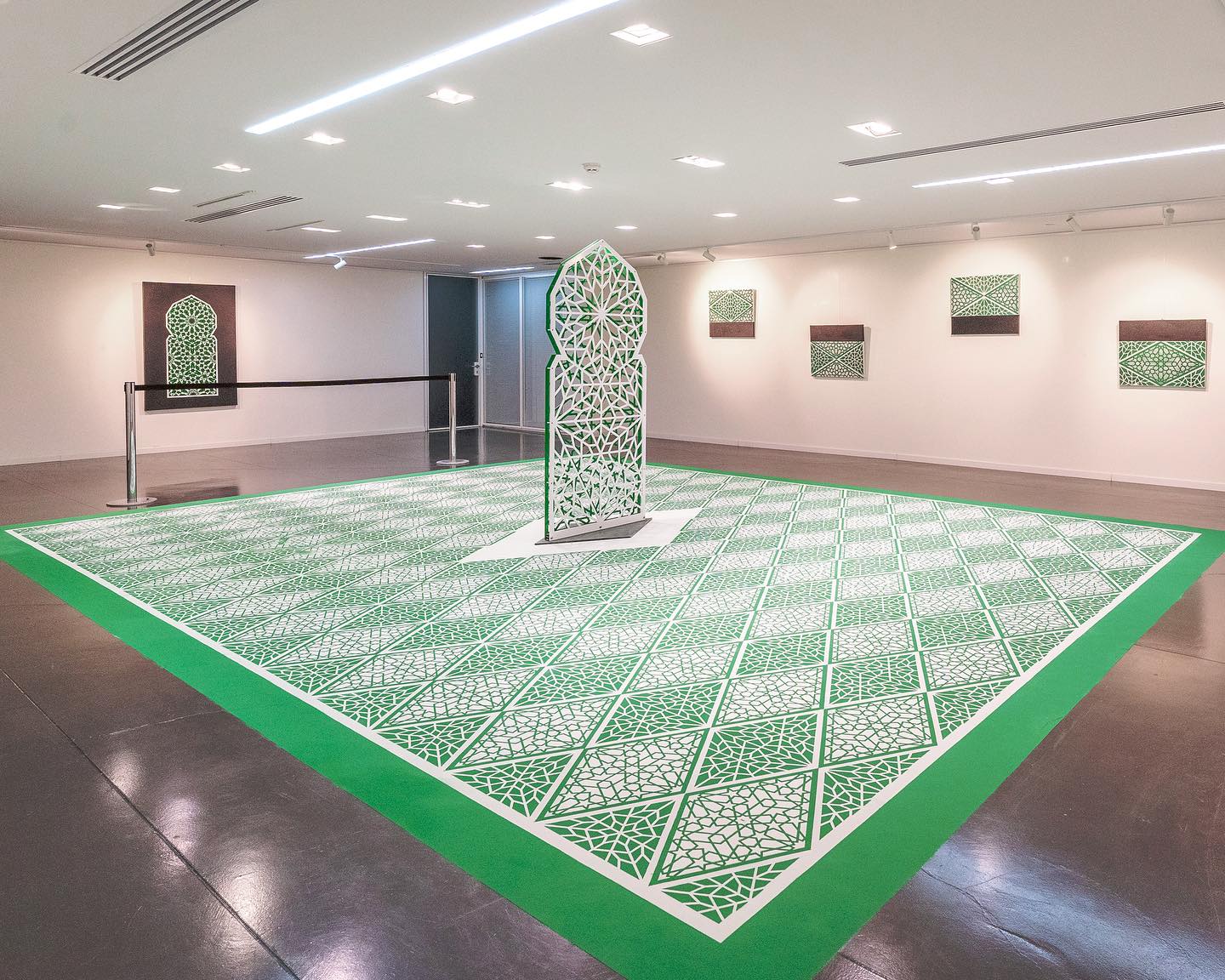
As a child growing up in Morocco, El Hajoui was deeply touched by the beauty of Arabic culture, which was always imbued with meditative and spiritual elements. From the intricate patterns on a carpet to the architectural designs of a door, every detail held symbolic meaning and connected to a deeper cultural value.
For example, a carpet is more than a decorative piece; it serves as an invitation for guests and family, symbolizing many daily rituals of Arab life. It plays a central role in various activities, such as sharing meals on a roundtable, performing prayers, and celebrating ancestral festivals.
Without the carpet, these rituals would be incomplete, making it an integral part of cultural practices.
“I draw a lot of inspiration from my surroundings and the environment I’m in,” El Hajoui explains to Egyptian Streets. “If you have a small sheet of paper, your imagery and content will be limited. However, if the paper is ten times larger, you’ll find yourself thinking on a larger scale, aiming to fill the entire space.”
Historically, indigenous Arab culture has often been misunderstood, with some foreign writers and travelers such as Wilfred Thesiger, a British traveler and military officer, describing it as lacking in architecture. He portrayed Arab indigenous in his book Arabian Sands (1959) life as one of extreme simplicity, where only basic necessities—food, drink, garments, and shelter—were deemed essential for survival in the harsh desert environment.
In contrast, other writers and artists have acknowledged the symbolism and beauty within the culture, seeing it as a realm of transcendental beauty and spirituality. Richard F. Burton, nineteenth-century traveler to the Arab region and translator of The Arabian Nights (1704), described the region as a “a fairy-land lit with a light which never shines on other soils or seas.”
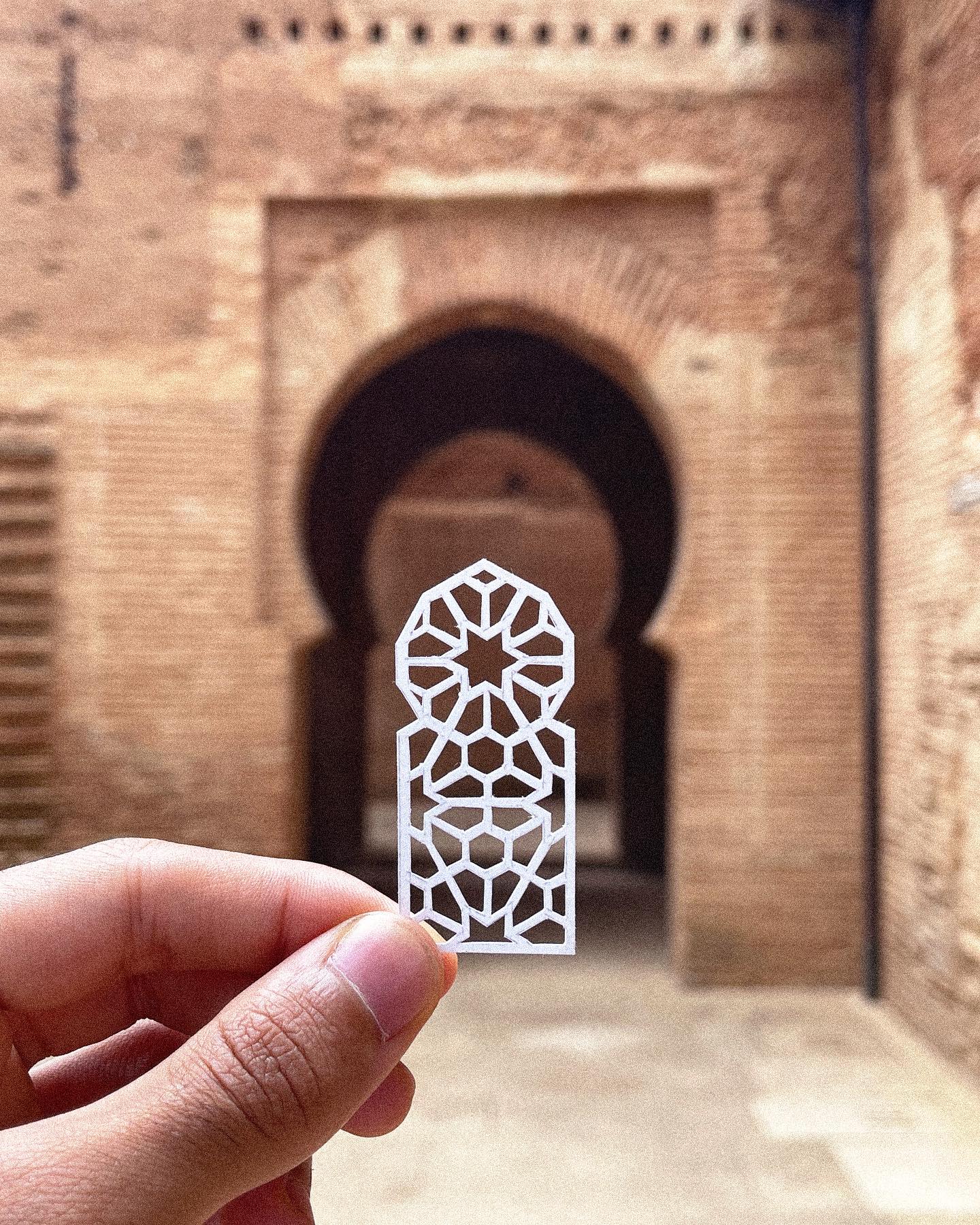
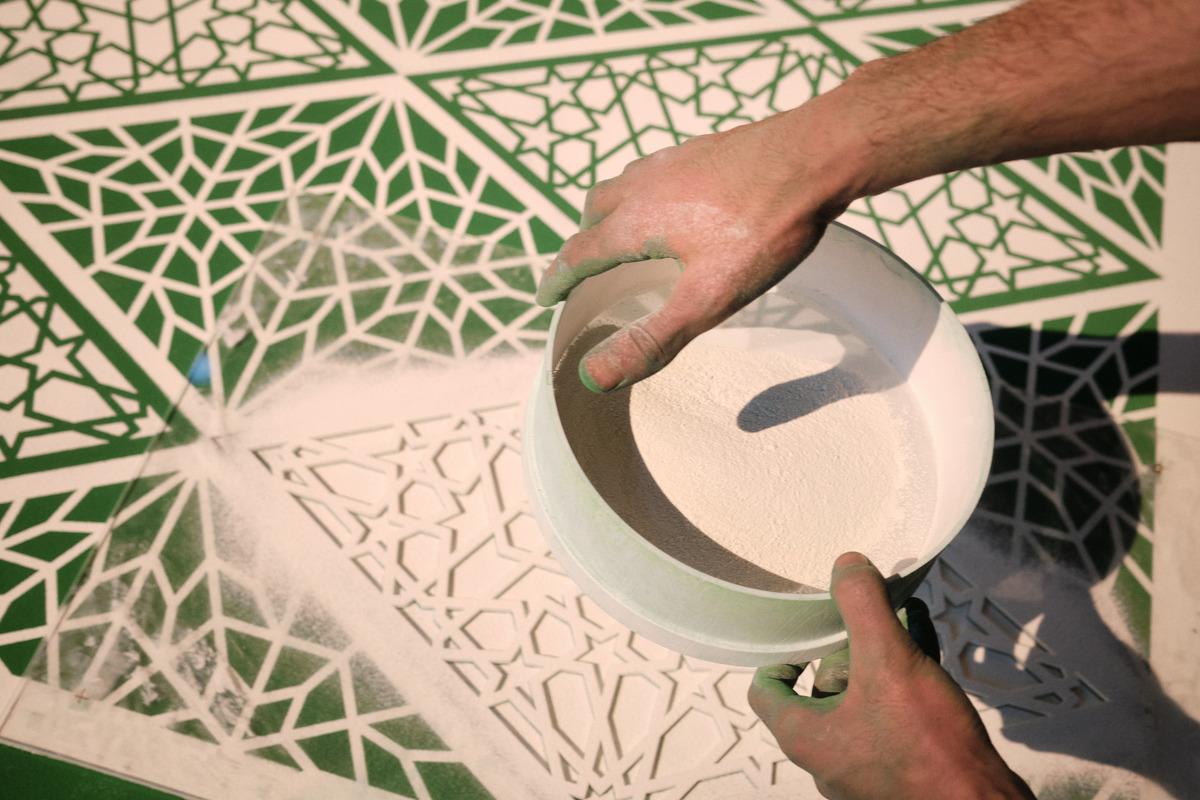
It is this kind of beauty, spirit, and depth that El Hajoui finds in Arab indigenous culture. For him, art is a transcendent and meditative process that connects him to the environments of indigenous people. From his choice of materials to his artistic process, every detail and element embodies the spirit of indigenous Arabs.
“I have a deep attachment to my culture, land, and family, and I worry that I might gradually and unintentionally lose touch with my origins,” he says. “It is important for me to keep my culture alive in my work. I feel a responsibility to future generations in Italy, as if my art is connected by an umbilical cord to my roots and heritage.”
El Hajoui’s process is unique in its deep focus on memory, and the role of memory in preserving both heritage and the emotions tied to one’s homeland. By drawing on snippets of memories from his childhood spent living with his family in an Arab household, El Hajoui retraces his experiences and connects them into a cohesive narrative.
His narrative bridges indigenous Arab art with modern 3D installations, creating a space that transports viewers back in time. “My goal is to immerse the viewer in my art, not just visually, but also by inviting them to walk around it and forge a deeper connection,” he says.
El Hajoui’s recent project, Radici (2023) which he exhibited as a finalist in the Arte Laguna Prize in Venice, Italy, exemplifies this approach, focusing on the symbolic significance of the door in Arab culture. For Arabs, the door transcends a mere design as it represents openness, hospitality, and generosity.
Opening the door for someone and inviting them in is a gesture of connection—a way of reaching out from one person to another.
“In the Arab world, the door is incredibly important. Consider the grand mosques—the construction of the door is always given special attention. Many people even decorate their own home doors with bright colors or intricate designs. The door is the first thing a guest sees before being welcomed into a home,” El Hajoui says.
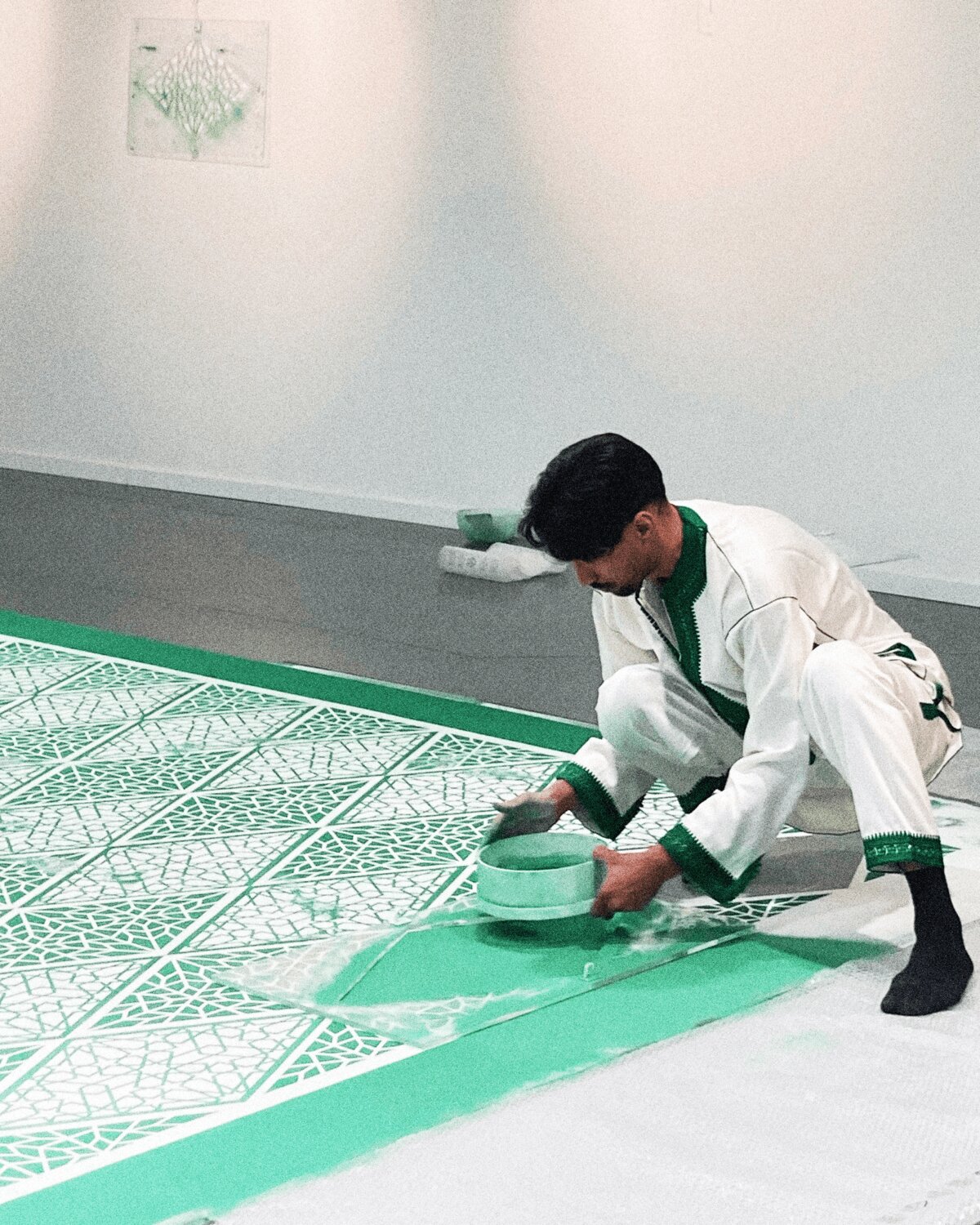
While drawing various geometric patterns and painting the tiny square shapes within them, El Hajoui enters a deeply meditative state, feeling a sense of harmony as all the shapes come together.
The geometric patterns themselves evoke spiritual and meditative feelings, but the process of creating them is also a meditative act. “Making Islamic patterns is like transporting me to a place of worship, because Arabic art is aniconic art, it does not represent deities, and for this reason we can find it in worship spaces and in small and large mosques around the world,” he says.
Viewing the completed art installation evokes a sense of awe and reflection, much like the ancient settings of indigenous Arab communities, which also inspired tranquility and peace.
“When I create an art installation within a space, it transforms into a place of reflection for me,” he adds. “It allows people to not only observe but also discover their own moments of peace, tranquility, and serenity.”
Artistic Activism
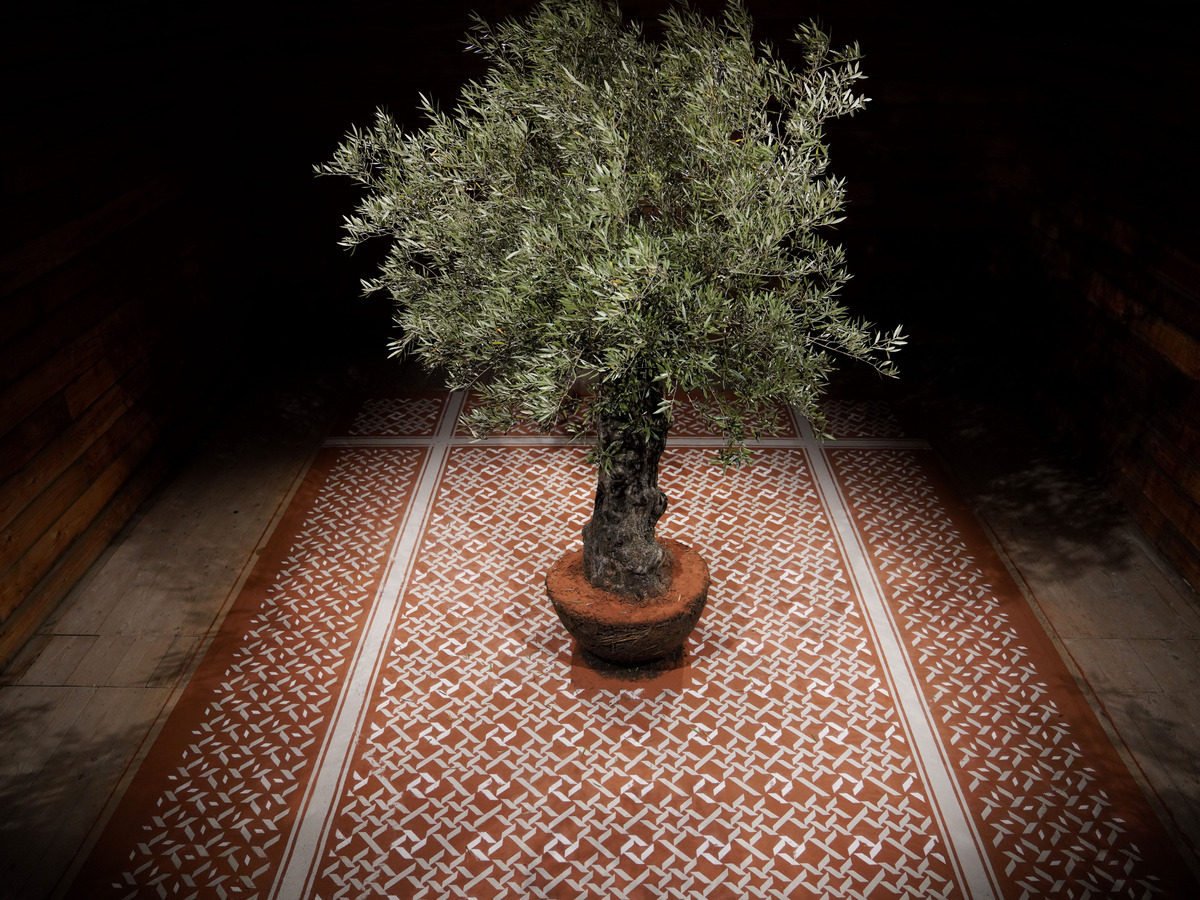
Some cultural symbols are overt and clearly visible, like national anthems, geometric patterns, or songs. Others are more subtle, like whispers that may not always be heard or understood, but still serve as a language for communicating a particular culture.
For El Hajoui, culture is conveyed not only through visible symbols, such as distinctive geometric patterns, but also through the emotions local people associate with particular spaces, a piece of land, or even a tree—like the deep significance of the olive tree for Palestinians.
In his recent project, Ardna (2024) —an Arabic term meaning “our land”— which was exhibited at the artistic residency at Centrale Fies, Italy, El Hajoui creates an installation featuring an olive tree surrounded by a carpet of ash. This ash, which envelops and nurtures the tree’s roots, also forms geometric patterns reminiscent of a keffiyeh, a symbol of Palestinian resilience and resistance.
The installation is visually striking and carries a poignant message. The ash symbolizes hope, strengthening the olive tree and its connection to the land, with the intention of similarly empowering the people of Palestine.
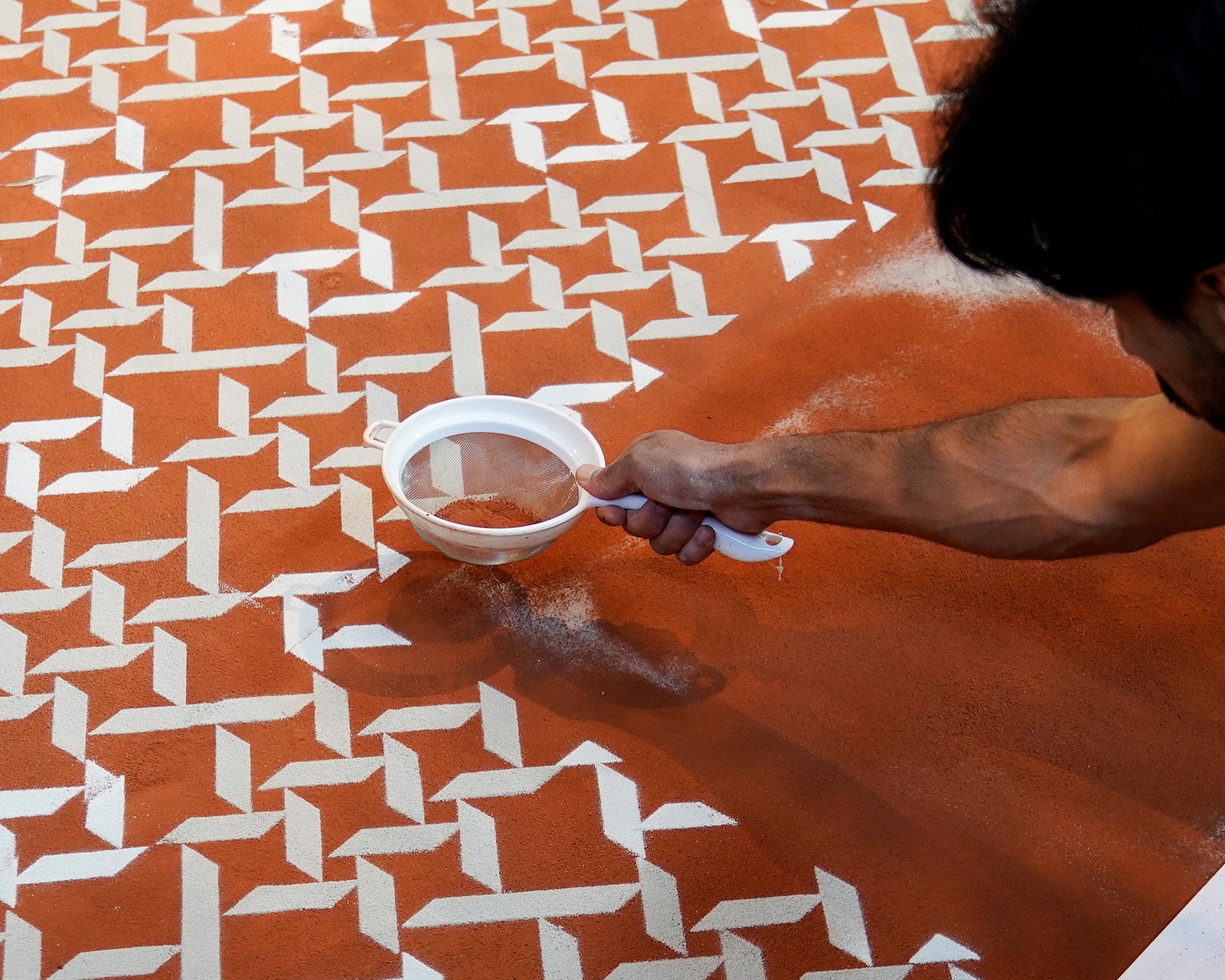

“The project emerged during a challenging time for me due to the situation in Palestine,” he says.
“Each day, I woke up thinking about how I could contribute through my art and make a meaningful impact. I believe art should have a purpose beyond mere aesthetics; otherwise, it risks being empty and lacking in substance,” he adds.
Drawing inspiration from the famous quote by Palestinian poet Mahmoud Darwish, “If the olive trees knew the hands that planted them, their oil would become tears,” El Hajoui’s art installation inspires a deeper reflection on our connection to our homeland.
It encourages us to consider not just our conceptual understanding, but also our lived experience of the land and how we engage with it. Home is not just a sentimental memory; it’s a tangible experience brought to life through this art installation.
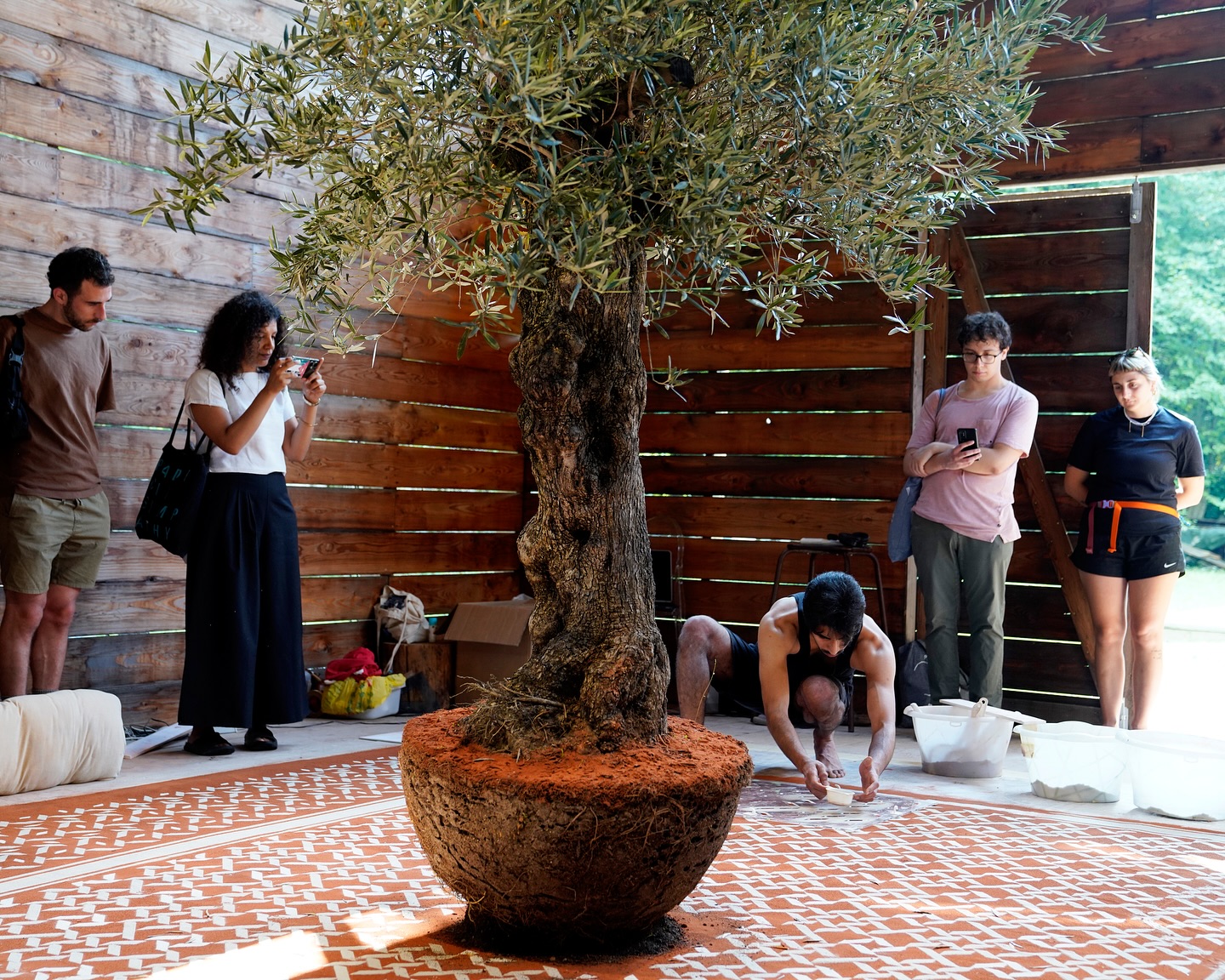



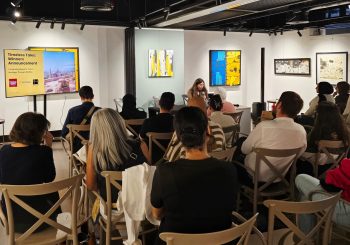
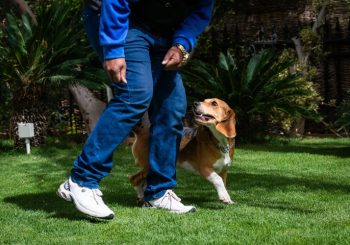

Comments (0)